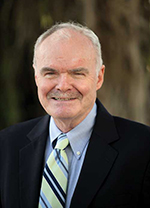Building a car from the ground up has precedent in South Florida. As Jason Wenig observes, auto racing legend Briggs Cunningham had a plant in West Palm Beach where he built his race cars, and later some 25 street machines.
 |
| The Miami Herald columnist Fred Grimm |
 |
| Rendering: Marina Lofts/BIG |
The case of Brennan of The Tree is getting a lot of publicity, mostly in favor of Brennan and The Tree. The tree is the famous rain tree that sits on the south side of the New River in downtown Fort Lauderdale. It sits where a developer wants to put up another high-rise building in a section that already has too many. The tree is in his way. Brennan is Chris Brennan, the chap who lost his job with the Water Taxi because he refused to stop advocating for the tree. This happened after the developer, who happens to be Water Taxi’s landlord, complained about him. He is now a bartender, according to Sun-Sentinel columnist Mike Mayo. Judging by his quotes in the paper, and a video he posted online, Brennan should make a good one. He’s exceptionally articulate and bartending is one profession where advocating for almost anything will build a loyal following.
At this point the lady of the house returns. She confirms that they are indeed working there, and the cops, who had not been the masters of charm up to that point, immediately become the nicest fellows in the world, apologizing to the workmen for the misunderstanding. They even put their guns away.
Now some people in these circumstances would call a lawyer, sue for false arrest or some other silly claim and maybe get some money, at our taxpayers' expense. But these workmen are not that type. But they do wonder what made the cops so hyper.
What made the cops so hyper is that sometimes in similar circumstances, the burglars are real, and armed, and sometimes a cop, wearing a bulletproof vest, takes a slug in the face. They are still looking for people who killed police around here in recent years.
And in Washington there are people who are bought by the National Rifle Association, which pays big money to people who represent it, and even bigger money to the politicians who obligingly oppose anything that has to do with interfering with commerce, meaning selling guns. They don’t want to keep assault rifles out of the hands of law-abiding people, and they say criminals will always get them, so what’s the point of laws that will be only be broken, and might result in the loss of a gun sale? You heard the hired gun for the NRA make that argument before Congress.
The cops, of course, heard this more clearly than anyone, and they know that any time they confront a suspect, they might be faced with a gun. And that gun might have more firepower than the combined lead of several cops. And the above mentioned workmen, after coming down from the high associated with having guns pointed at them, can appreciate the challenge facing police in such cases.
They will get over the scary event, but it doesn’t make their jobs more fun.







